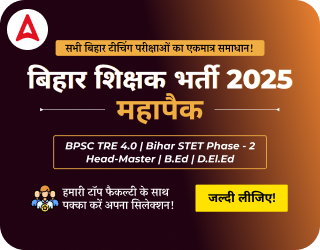Table of Contents
TGT stands for Trained Graduate Teacher, a designation for graduates who are qualified to teach students from Classes 6 to 8. To become a TGT, candidates must hold a graduate degree along with a B.Ed. and pass a relevant eligibility exam like CTET or a state-level TET. Once certified, TGTs can apply for teaching positions in both government and private schools across India. This role offers a stable and rewarding career path for those passionate about teaching at the middle school level. In this article, we’ll cover everything you need to know about the TGT full form, eligibility criteria, and career prospects.
What is the TGT Full Form?
TGT stands for Trained Graduate Teacher. To qualify as a TGT, candidates must have a graduation degree in a relevant subject from a recognized Indian university, along with a Bachelor of Education (B.Ed.) degree. Additionally, clearing a Teacher Eligibility Test (TET), such as the CTET or a State-level TET, is mandatory. This combination of academic qualification and eligibility certification makes candidates eligible to apply for TGT positions in both government and private schools.
TGT Eligibility Criteria and Age Limit
Candidates aiming for TGT positions must fulfill specific eligibility criteria that are generally uniform across most recruitment exams in India. These standards are designed to ensure that teachers are academically qualified and professionally trained to handle students from Classes 6 to 8. Typically, candidates must hold a graduation degree in a relevant subject, possess a B.Ed. qualification, and pass a Teacher Eligibility Test (TET) like CTET or the respective state-level TET to be considered eligible for TGT roles in both government and private schools.
- Bachelor’s Degree (Honors/Pass) with at least 45% marks in the concerned subjects/combination of subjects and in aggregate.
- B.Ed or equivalent degree from a recognised university.
- CTET Paper II Passed by CBSE
- Working knowledge of Hindi/English
- At least one out of the following should have been at the elective level i.e. English, Mathematics, Natural / Physical Science, and Social Science
TGT Full Form and Subjects Taught by TGTs
TGT teachers are responsible for teaching specific subjects in classes 6 to 8. Here’s a list of the subjects that Trained Graduate Teachers typically handle during these middle school years.
- English
- Mathematics
- Science
- History
- Economics
- Local language
- Geography.
Is CTET Mandatory for TGT?
The Central Teacher Eligibility Test (CTET) plays a crucial role for those aiming to become Trained Graduate Teachers (TGTs). Clearing CTET or equivalent state-level exams such as REET, HTET, or UPTET is mandatory for applying to most government teaching jobs. These certifications validate a candidate’s teaching aptitude and eligibility. After earning a graduation degree and B.Ed., qualifying CTET or a State TET becomes a necessary step to access teaching positions across schools in India. Without it, candidates are typically ineligible for recruitment in public sector institutions.
Recruitment Exams for TGT Posts
Candidates aspiring to become Trained Graduate Teachers (TGTs) must stay updated with the latest vacancy announcements from central and state government education departments. Tracking these updates gives a clear idea of the number of available posts across different regions and subjects, helping aspirants prioritize their applications and tailor their exam preparation accordingly. Being aware of upcoming TGT recruitment drives is key to maximizing opportunities and securing a teaching position.
| Institutions | Vacancies |
| Kendriya Vidyalaya Sangathan (KVS) | To be Announced |
| Navodaya Vidyalaya Samiti (NVS) | To be Announced |
| Delhi Subordinate Service Selection Board (DSSSB) | To be Announced |
| Army Public School (APS) | To be Announced |
| RPSC Senior Teacher | To be Announced |
| RPSC Grade 2 | To be Announced |
Difference between TGT, PRT, and PGT
The education system typically employs three different types of teachers based on their specialization and qualifications:
- PRT (Primary Teacher): Responsible for teaching students in primary grades (usually grades 1 to 5). They need a Diploma in Education (D.Ed.) or its equivalent qualification.
- TGT (Trained Graduate Teacher): Handles classes between grades 6 and 10, specializing in specific subjects like Science, Mathematics, Social Studies, English, and Languages. They possess a Bachelor’s degree and a B.Ed. or D.Ed.
- PGT (Post Graduate Teacher): Teaches students in higher secondary grades (grades 11 and 12). They have a Master’s degree in their subject area and a B.Ed. or equivalent teaching qualification.
Conclusion:
TGTs are the backbone of secondary education, fostering young minds and shaping their academic journeys. By providing effective instruction, fostering creativity, and building strong relationships with students, TGTs lay the foundation for a brighter future for generations to come.




 UGC NET 2025 Paper 1 Takes a New Turn, K...
UGC NET 2025 Paper 1 Takes a New Turn, K...
 UGC NET Question Paper 2025 Released by ...
UGC NET Question Paper 2025 Released by ...
 CSIR NET Application Form 2025, Apply Ti...
CSIR NET Application Form 2025, Apply Ti...




